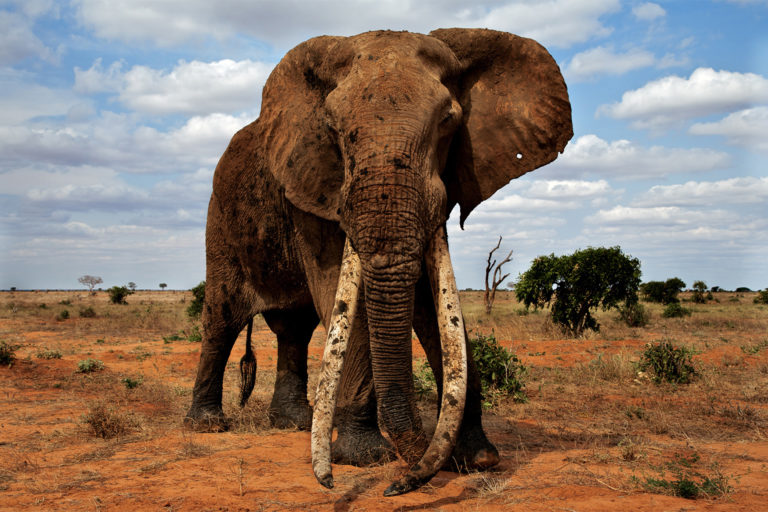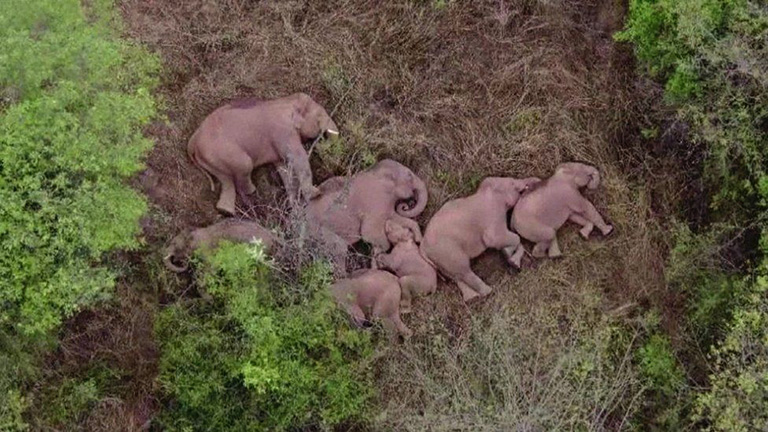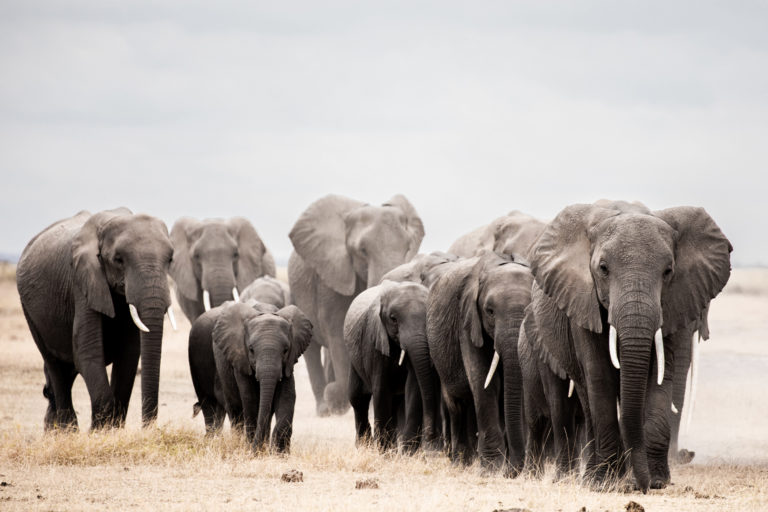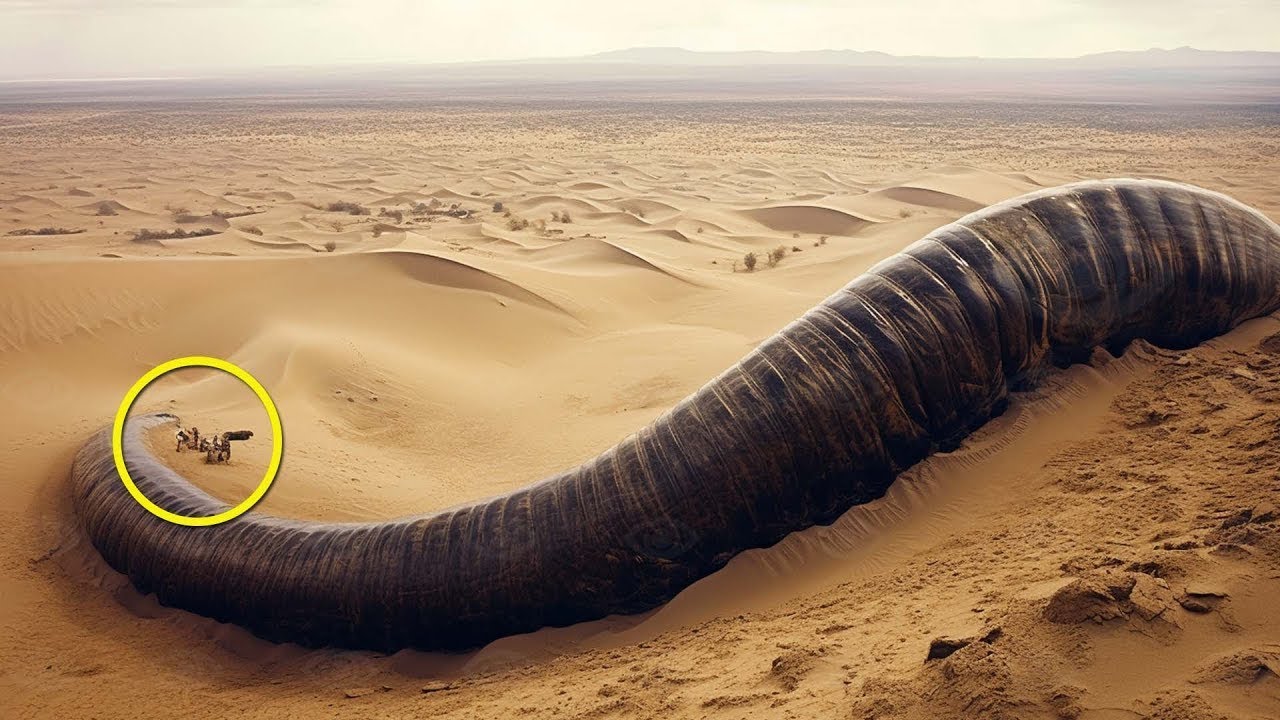- A recently published study that analyzed movement data from 229 elephants has found that human influence and protected areas are main factors determining the size of elephant ranges.
- Protected areas alone are not large enough to provide space for elephants, and elephants living outside them are under pressure from expanding human populations.
- Finding ways for elephants to coexist with humans, including through proper planning of wildlife areas and corridors, will be key to ensuring that elephant populations have a future.
In an undisturbed ecosystem, elephants move across the landscape in response to the availability of food and water and the type of habitat or competition. But according to a continent-wide study coordinated by Save the Elephants and recently published in Current Biology, elephants’ range is now predominantly defined by human activities and the boundaries of protected areas.
The study compared tracking data from 229 elephants collected from 19 sites across Africa between 1998 and 2013 against variables such as vegetation type, tree cover, water availability and human influence.
Annual ranges of the elephants the study looked at were determined by just two variables: the human footprint and the overlap with a protected area. “We were surprised that many of the variables we traditionally thought to influence elephant movement, such as slope or vegetation, were not important … over longer time frames,” said Jake Wall, director of research at the Mara Elephant Project and lead author on the paper.
Over shorter time frames, the researchers found that environmental factors still determined how and why elephants moved about within their range, but human factors ultimately decided the size of range they moved within.
“Anthropogenic factors force them to choose safety, often in preference to where the ideal food and water may be found,” said co-author Iain Douglas Hamilton, founder of Save the Elephants and senior research associate at Oxford University. “It’s often a balance between safety, sustenance, and 𝓈ℯ𝓍.”
 Murembo, a Great Tusker from Tsavo, Kenya’s largest protected area. Image courtesy of Johan Marais.
Murembo, a Great Tusker from Tsavo, Kenya’s largest protected area. Image courtesy of Johan Marais.
Douglas-Hamilton, who pioneered radio tracking of elephants in Tanzania in 1969, has seen huge changes in the relationship between elephants and humans over the course of his long career.
“The idea of men equipped with automatic rifles entering national parks and reserves and decimating the elephants never occurred to us in our wildest nightmares,” he says, “yet it happened.”

In March 2021, the IUCN published separate conservation assessments for the two African elephant species — the forest elephant (Loxodonta cyclotis) and the savanna or bush elephant (Loxodonta africana) — for the first time after new genetic evidence that they were separate subspecies. Both subspecies were previously clumped under the singular “African elephant.” Forest elephants are now classified as critically endangered, following an 86% population decline over the last 30 years, while the savanna elephant is now classified as endangered, with populations having decreased at least 60% over the last 50 years.
After sustained efforts by conservationists and governments to tackle the poaching crisis, there is now a glimmer of hope for Africa’s elephants, with some populations stable or increasing. However, the paper’s findings highlight a different problem for recovering populations.
“What we have been assuming is that the land and habitat is probably intact, is available, and when animals bounce back from poaching, they will find space to live in,” says Ben Okita-Ouma, co-chair of the IUCN elephant group and head of monitoring for Save the Elephants, who was not involved with the paper.
Based on tracking data, the research team estimated that nearly two-thirds of the continent still offers suitable habitat for elephants. But elephants currently inhabit only 17% of suitable habitat across Africa, more than half of which is outside protected areas. With the continent’s human population predicted to double by 2050, conservationists face a serious challenge in ensuring that habitat is not just suitable for elephants, but also available to them.
 A map that illustrates the potential and actual range of African elephants. Image courtesy of Wall et al. (2021).
A map that illustrates the potential and actual range of African elephants. Image courtesy of Wall et al. (2021).
“In many places, elephants range far outside of protected areas, suggesting they need more space than is currently under protection for wildlife,” Wall says.
When expanding elephant populations meet expanding human populations outside of protected areas, the result is often human-elephant conflict. Douglas-Hamilton says he wants to see conflict turn to coexistence by ensuring local communities can experience and benefit from wildlife.
“Ultimately the elephants’ survival is going to depend on how people feel about them,” he said, “not just people visiting them, or from a distance, but people who have to live side by side with them.”
The diversity of circumstances for elephants and people across Africa means there is no single solution. In some places, the increasing density of human populations and modern infrastructure like roads, railways, powerlines and permanent buildings mean that coexistence is a challenge.

Okita-Ouma points to the herd of 15 wild Asian elephants that have been roaming across China for the last few months as an example of the difficulty of living with elephants. The elephants have become an internet sensation, watched by millions and capturing the imagination of the Chinese people. As the elephants move toward human settlements, the Chinese authorities have reportedly deployed 319 personnel and 18 drones to monitor their progress and attempt to divert them from built-up areas.
“It’s a situation where people are sympathising, we really love these animals, and we really want to give them space, but the reality is, where [the elephants] have come to, we can’t coexist with them,” Okita-Ouma says.
 Elephants on the move. Image courtesy of David Giffin.
Elephants on the move. Image courtesy of David Giffin.
Douglas-Hamilton, Wall and Okita-Ouma all agree that planning for elephants is key, in particular wildlife corridors that allow connectivity for elephants to roam and access the resources they need. The government of Botswana has successfully implemented wildlife corridors to allow elephants from Chobe National Park to access the Chobe River, even through industrial, urban or agricultural areas.
“We still have the opportunity to plan our lands better, to designate lands for wildlife and to ensure that those areas that are designated for wildlife are well connected,” Okita-Ouma says. “If we can make use of that chance then the future for elephants is bright.”
Citations:
Adams, T. S., Chase, M. J., Rogers, T. L., & Leggett, K. E. (2017). Taking the elephant out of the room and into the corridor: Can urban corridors work? Oryx, 51(2), 347-353. doi:10.1017/s0030605315001246
Wall, J., Wittemyer, G., Klinkenberg, B., LeMay, V., Blake, S., Strindberg, S., … & Douglas-Hamilton, I. (2021). Human footprint and protected areas shape elephant range across Africa. Current Biology, 31(11), 2437-2445. doi:10.1016/j.cub.2021.03.042
Banner image: Thirsty elephants approaching the Gemsbokvlakte Waterhole in Etosha National Park, Namibia. Elephants are highly adaptable and able to survive in a huge variety of habitats. Image courtesy of Roy Terlien.
FEEDBACK: Use this form to send a message to the author of this post. If you want to post a public comment, you can do that at the bottom of the page.





